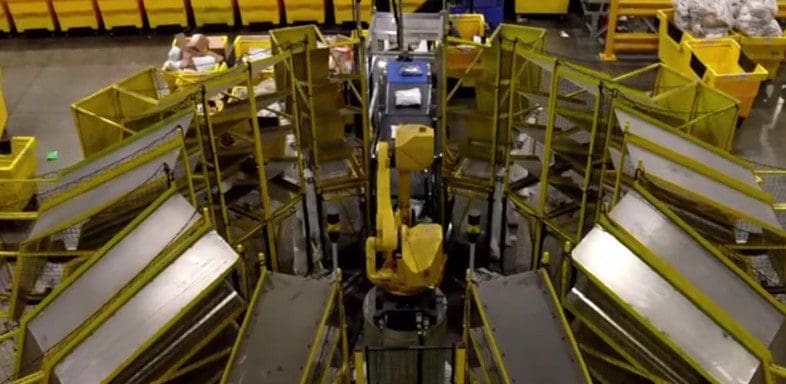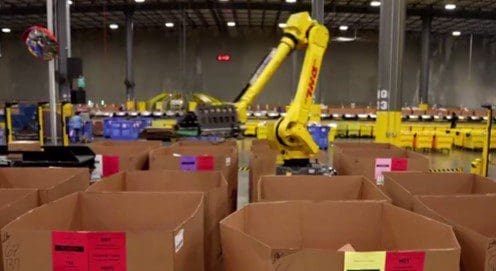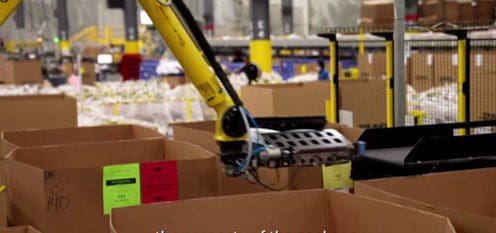
DHL held its inaugural DHL Robotics Hour media event earlier this week. The webinar covered a broad range of topics including the future of work in logistics and the major social, business, and technology trends affecting the logistics industry. My interests lie in the warehouse and the application of technologies in support of these processes. As a result, I found the content surrounding DHL’s successful robotic sortation pilot to be intriguing. The year-long pilot involved the adoption of two Dorabot DoraSorter systems. This pilot is part of DHL eCommerce Solutions’ $100 million five-year automation investment plan.
DHL’s DoraSorter in Action

The two robotic sortation solutions were installed with distinct configurations, one for Sort-to-Gaylord (big corrugated box) and the other for Sort-to-Bag. Each of these configurations is capable of sorting more than 1,000 parcels and packages per hour. Although this throughput level is substantially lower than the high-end high-speed sorters available, it is also substantially higher than many sorting alternatives. Put simply, it has its place somewhere in the middle range of throughput requirements.
The DoraSorters are equipped with 3D scanners to identify the package and direct the robotic arm to the appropriate drop slot destination. In the Sort-to-Bag configuration, the sortation system receives packages from the conveyor line, inducts the package onto the end-effector, and the arm articulates to one of the many adjacent destination chutes and the end-effector discharges the package for shipment to one of 80 final mile zip code destinations.
In the Sort-to-Gaylord configuration, the robotic arm is surrounded by 20 tall Gaylord containers, each five feet in height. The end-effector on the robotic arm is a proprietary drawer-shaped conveyor belt that inducts packages from a conveyor line, stabilizes the package on the end-effector, articulates above the appropriate Gaylord, and discharges the package into the Gaylord from above.
The Ingenuity of the End-Effector

The proprietary drawer-shaped, conveyor belt end effector is the characteristic I found most innovative about this solution utilized at DHL. Most robotic arm picking and sortation systems utilize suction and/or a grasper to “lift” items and subsequently deposit them to their destination location (bin, chute, box, etc). This picking process is complex when the items are dissimilar. This conveyor belt end effector takes a different approach. Rather than grasping and item, it supports and balances items from below. As a simplistic analogy, traditional graspers pick items similar to a waiter grasping a plate with his hands and carrying it to the customer’s table. The Dorabot end-effector “pulls” the item onboard with the conveyor and balances the item (sides also mechanically clamp down to hold items in place while the robot articulates) from below in a similar way that a waiter would transport a meal on a server tray. Although balance is required, the difficulty of top-down grasping is replaced with support from below.
Last Word
While watching the video, it is clear that a great deal of intelligence is behind the identification of items, proper support of items on the end effector, and the precise movements of the robotic arm to the discharge location. It is also likely that packages directed to these robotic cells must meet certain criteria to minimize damage that can occur during discharge drops. But the system appears to be properly designed to address the needs of a given range of use cases like these cases at DHL eCommerce Solutions.

















